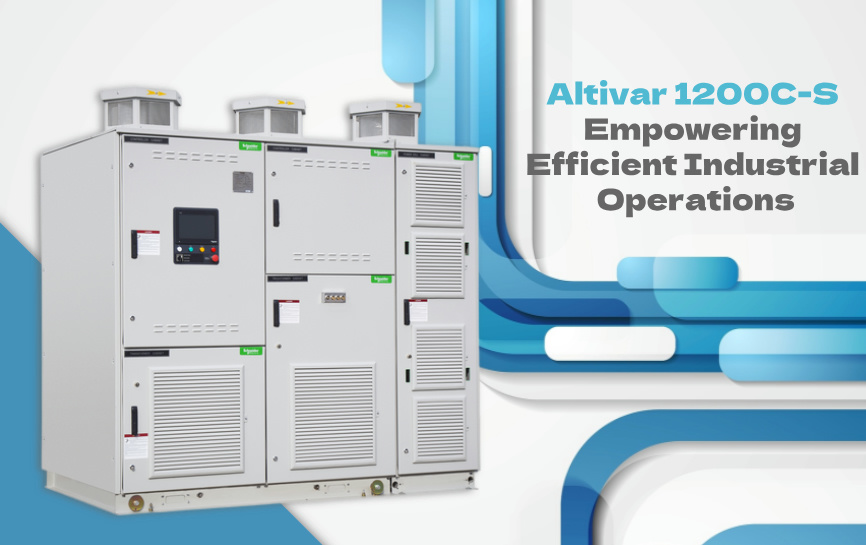Unlock the Secrets of Variable Frequency Drives: Transform Your Understanding and Applications!
Variable frequency drives (VFDs) are pivotal components in modern industrial settings, playing a crucial role in optimizing the performance and efficiency of electric motors. These devices allow for the precise control of motor speed and torque, making them indispensable in numerous applications ranging from manufacturing to HVAC systems. As industries continue to evolve with technological advancements, understanding the functionality and applications of VFDs becomes increasingly important for engineers, technicians, and business owners alike. In this article, we will delve into the inner workings of VFDs, explore their key functionalities, examine their various applications, and discuss emerging trends shaping the future of these vital devices.

Understanding Variable Frequency Drives
At its core, a variable frequency drive is a type of motor controller that alters the frequency and voltage supplied to an electric motor. This modulation allows for effective control over the motor's speed and torque, enabling precise operation tailored to specific needs. A typical VFD consists of three primary components: the rectifier, inverter, and control unit. The rectifier converts incoming AC power to DC, which is then processed by the inverter to generate adjustable AC output. The control unit monitors the motor's performance and adjusts the output frequency and voltage accordingly. This intricate but efficient setup allows for a wide range of operational capabilities. I remember a friend who works in a manufacturing plant sharing how their recent upgrade to VFDs significantly reduced energy consumption and improved the overall efficiency of their assembly line.
Key Functionalities of Variable Frequency Drives
The functionalities of VFDs extend far beyond simple speed regulation. One of their primary features is the ability to control motor speed with remarkable precision. This capability translates to improved torque management, allowing motors to start and stop smoothly without causing mechanical stress. Additionally, VFDs contribute significantly to energy efficiency. By adjusting the motor speed to match the actual load requirements, they reduce unnecessary energy consumption, which is particularly beneficial in systems with varying demand. For instance, in a friend’s HVAC system, switching to VFD technology allowed for better climate control and substantial energy savings, demonstrating how VFDs can lead to both operational and cost advantages. Furthermore, these drives can help in reducing wear and tear on equipment, extending their lifespan and minimizing maintenance costs.
Applications of Variable Frequency Drives
Variable frequency drives find applications across a broad spectrum of industries. One of the most common uses is in HVAC systems, where they help modulate fan and pump speeds, maintaining optimal airflow and reducing energy expenses. In water treatment plants, VFDs are employed to control the flow rates of pumps, providing flexibility and efficiency in water management. Conveyor systems in manufacturing also benefit from VFDs, allowing for variable speed control that adapts to production needs, improving throughput and reducing material waste. The benefits of using VFDs are evident in these applications, as they enhance performance and reliability while offering cost savings on energy bills. A colleague in the food processing industry shared how their implementation of VFDs resulted in smoother operations and a marked decrease in energy consumption during peak hours.
Future Trends in Variable Frequency Drives
As technology progresses, the landscape of variable frequency drives is also evolving. Emerging trends include the integration of smart controls and IoT connectivity, allowing for more sophisticated monitoring and management of motor operations. This connectivity facilitates predictive maintenance, where potential issues can be identified before they lead to equipment failure, ultimately improving operational reliability. Additionally, VFDs are increasingly being recognized for their role in sustainable energy practices. With an emphasis on reducing carbon footprints, industries are leveraging VFD technology to enhance energy efficiency and contribute to greener operations. The future of VFDs looks promising, with ongoing innovations likely to enhance their capabilities even further.
Key Takeaways on Variable Frequency Drives
Understanding variable frequency drives is essential for anyone involved in industries that rely on electric motors. These devices not only enhance efficiency and productivity but also contribute to significant energy savings and reduced operational costs. As we have explored, VFDs offer a plethora of functionalities and applications that can transform industrial operations. With the continuous advancements in VFD technology, the potential for improved performance and sustainability is immense. I encourage readers to delve deeper into the world of variable frequency drives to discover how they can be harnessed for specific applications, ultimately leading to enhanced operational success.








